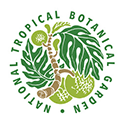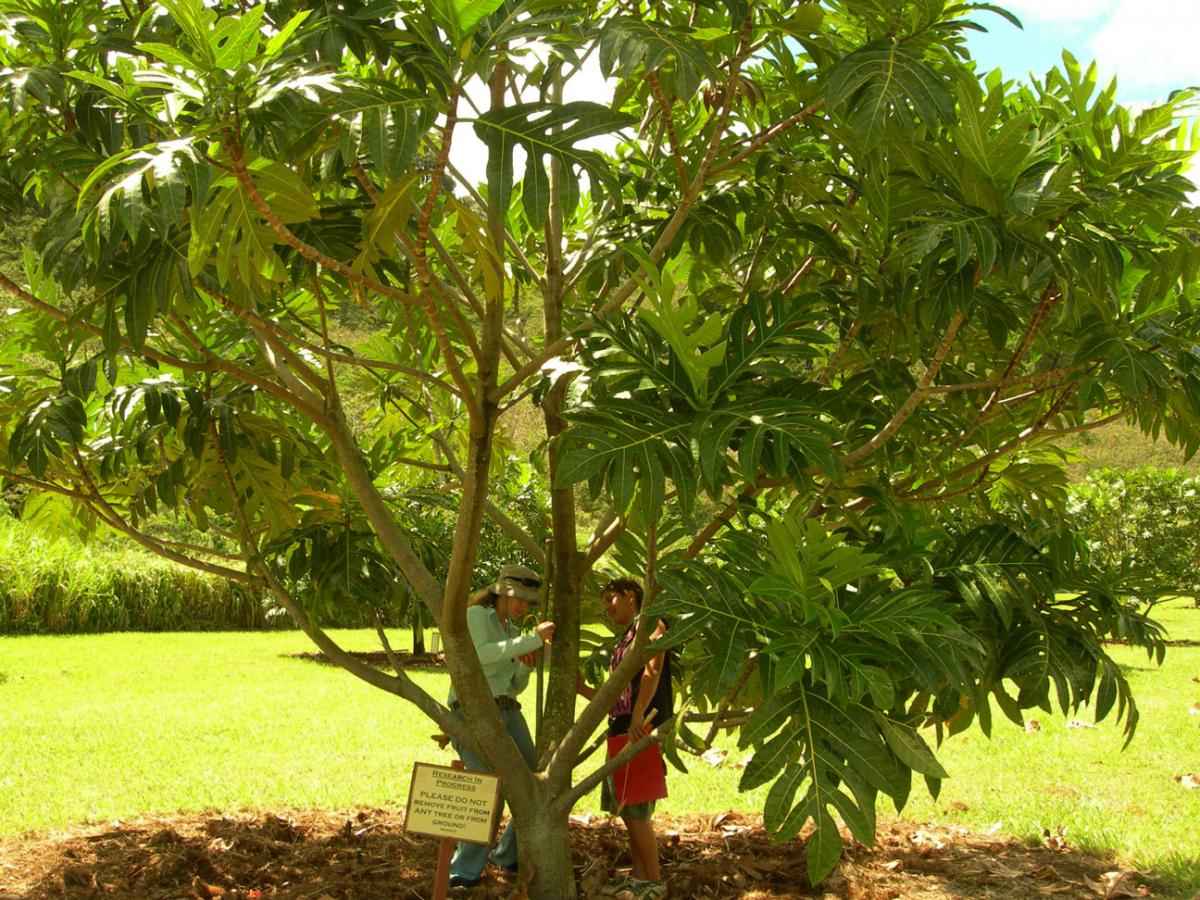 Scientific study of breadfruit is essential to a greater understanding of plant cultivation, care, and production. Researching the physiology, structure, genetics, and ecology of breadfruit trees has provided vital information to maximize potential in alleviating hunger and combating deforestation. Without studying the botany of breadfruit, we would never know a single breadfruit tree can produce food for more than 50 years, and needs no pollination to produce fruit.
Scientific study of breadfruit is essential to a greater understanding of plant cultivation, care, and production. Researching the physiology, structure, genetics, and ecology of breadfruit trees has provided vital information to maximize potential in alleviating hunger and combating deforestation. Without studying the botany of breadfruit, we would never know a single breadfruit tree can produce food for more than 50 years, and needs no pollination to produce fruit.
Flowers
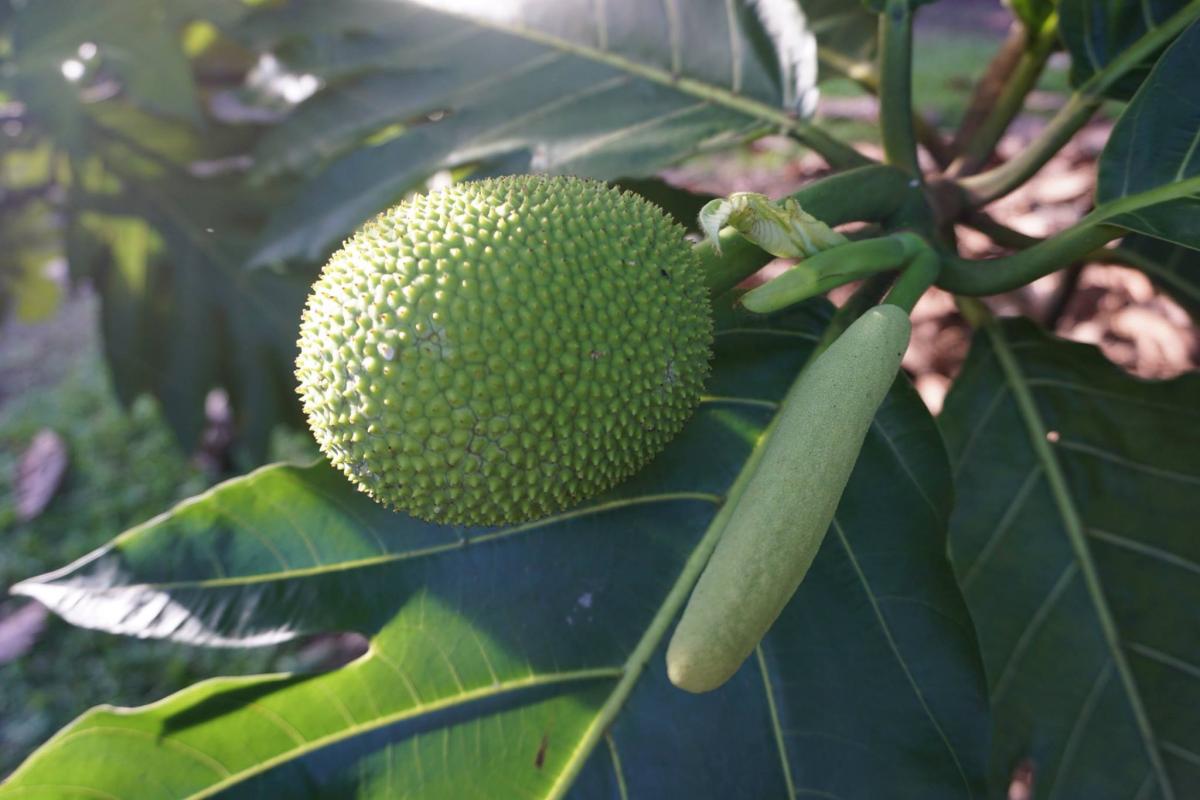
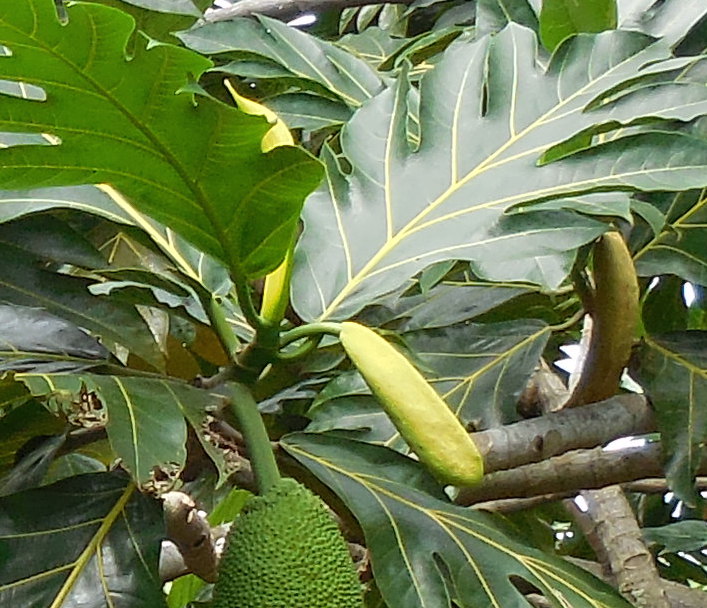 Breadfruit is monoecious with male and female flowers developing on the same tree at the end of branches. The male inflorescence (flower) typically appears first. It is club shaped, ranging from 10 cm to 45 cm long. The inflorescence consists of thousands of tiny, creamy yellow individual flowers attached to a spongy core. The inflorescence fades to dark brown with age. Pollen is shed 10 to 15 days after the emergence of the male inflorescence for a period of about four days. Honeybees are attracted to the abundant pollen produced by some varieties. Each female inflorescence consists of 1500–2000 reduced flowers attached to a spongy core. The flowers fuse together and develop into the fleshy, edible portion of the fruit.
Breadfruit is monoecious with male and female flowers developing on the same tree at the end of branches. The male inflorescence (flower) typically appears first. It is club shaped, ranging from 10 cm to 45 cm long. The inflorescence consists of thousands of tiny, creamy yellow individual flowers attached to a spongy core. The inflorescence fades to dark brown with age. Pollen is shed 10 to 15 days after the emergence of the male inflorescence for a period of about four days. Honeybees are attracted to the abundant pollen produced by some varieties. Each female inflorescence consists of 1500–2000 reduced flowers attached to a spongy core. The flowers fuse together and develop into the fleshy, edible portion of the fruit.
Fruit
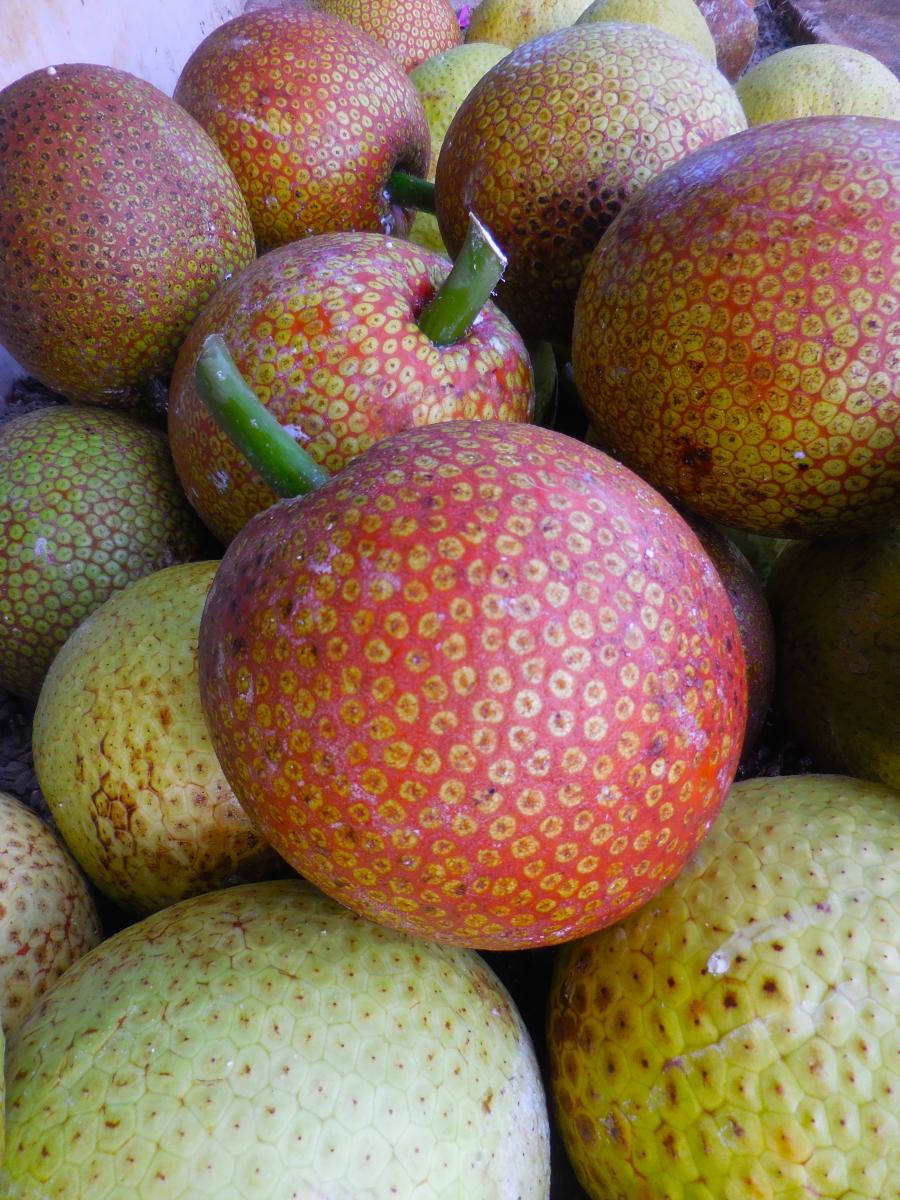
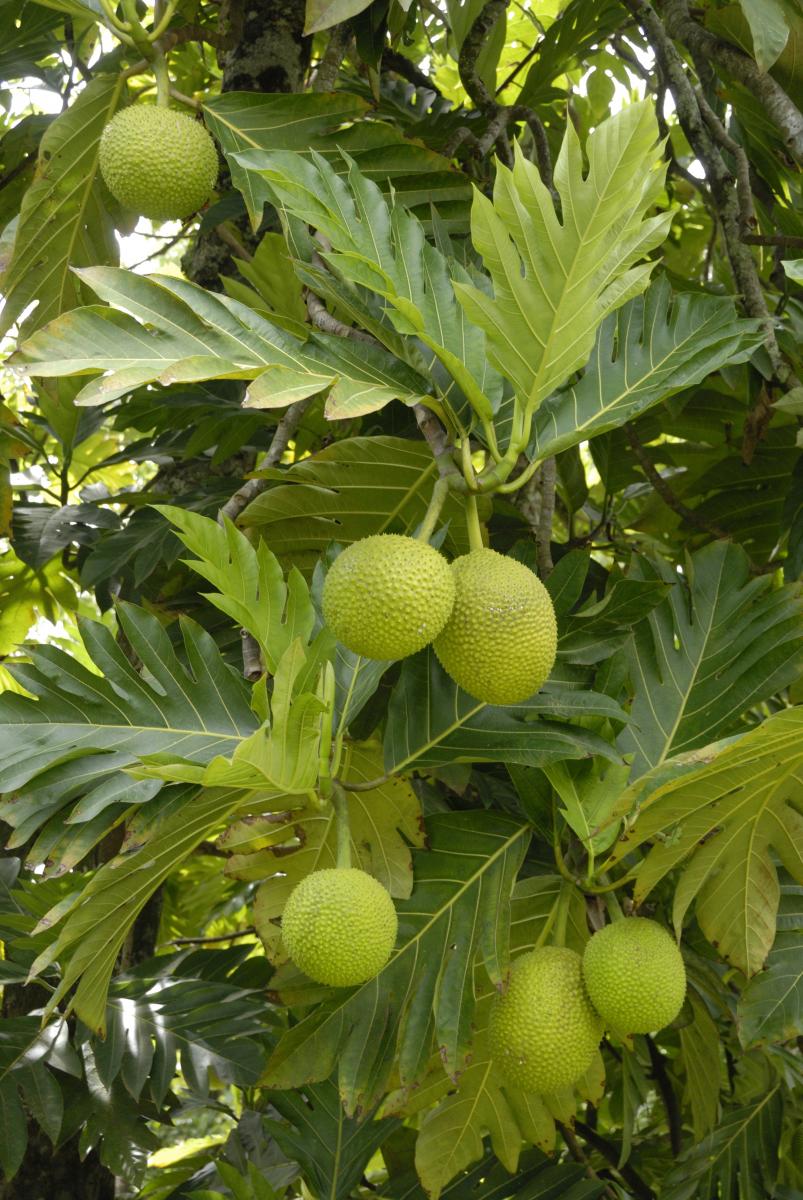 Each breadfruit is a compound or multiple fruit called a syncarp. The female inflorescence, appearing after the male, consists of 1500-2000 minute flowers attached to a spongy core. The flowers fuse together and develop into the fleshy, edible portion of the fruit. No pollination is required for a fruit to form. The skin is light to dark green, yellow-green, or yellow when mature, although one unusual variety has pinkish or orange-brown fruit. The thin skin is patterned with pentagonal or hexagonal markings and can be smooth, bumpy, or spiny. Fruit are typically mature and ready to harvest, cook, and eat in 15-20 weeks. The skin of ripe fruit can be green, but is more typically yellow or yellow-brown. The soft, sweet, creamy flesh can be eaten raw or cooked.
Each breadfruit is a compound or multiple fruit called a syncarp. The female inflorescence, appearing after the male, consists of 1500-2000 minute flowers attached to a spongy core. The flowers fuse together and develop into the fleshy, edible portion of the fruit. No pollination is required for a fruit to form. The skin is light to dark green, yellow-green, or yellow when mature, although one unusual variety has pinkish or orange-brown fruit. The thin skin is patterned with pentagonal or hexagonal markings and can be smooth, bumpy, or spiny. Fruit are typically mature and ready to harvest, cook, and eat in 15-20 weeks. The skin of ripe fruit can be green, but is more typically yellow or yellow-brown. The soft, sweet, creamy flesh can be eaten raw or cooked.
